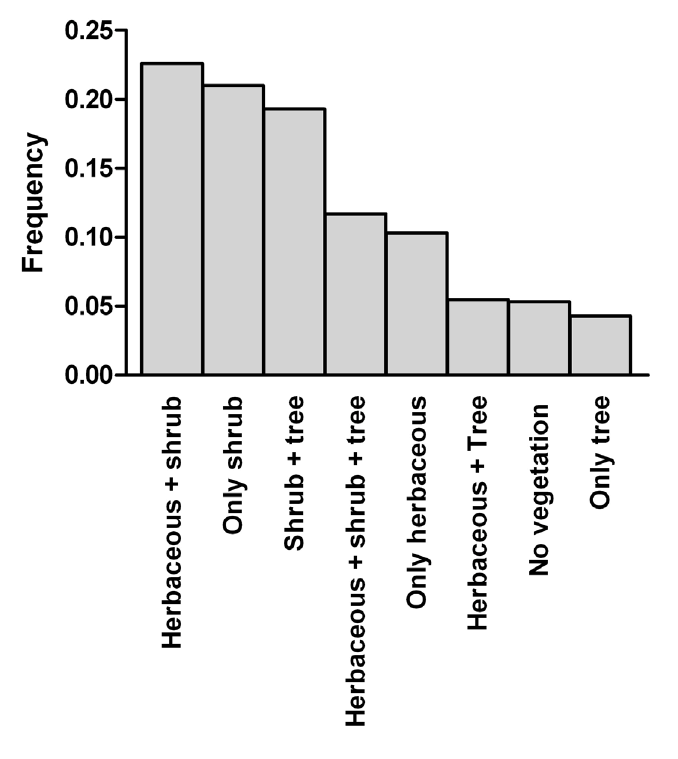
Ecological Archives A025-128-A1
Patricio N. Magliano, David D. Breshears, Roberto J. Fernández, and Esteban G. Jobbágy. 2015. Rainfall intensity switches ecohydrological runoff/runon redistribution patterns in dryland vegetation patches. Ecological Applications 25:2094–2100. http://dx.doi.org/10.1890/15-0550.1
Appendix A. Description of the study site vegetation in Dry Chaco woodland (Argentina, lat-lon: -33.5; -66.5).
Table A1. Relative frequency of species present in transects grouped by layers (herbaceous, shrub and tree) according to their height based on Canfield lines (three 36-meter lines for each layer). Other species present in the study site, but not intercepted by transects, are the trees Geoffroea decorticans and Bulnesia retama.
Herbaceous layer (<0.5 m) |
% |
|
Shrub layer (0.5–2 m) |
% |
Stipa eriostachya |
34.5 |
|
Larrea divaricata |
46.8 |
Aristida mendocina |
32.0 |
|
Senna aphylla |
14.3 |
Pappophorum caespitosum |
8.1 |
|
Moya spinosa |
10.9 |
Cordobia argentea |
6.9 |
|
Celtis ehrembergiana |
10.8 |
Gouinia paraguayensis |
3.9 |
|
Condalia microphylla |
6.1 |
Abutilon terminale |
2.8 |
|
Capparis atamisquea |
4.8 |
Aristida adsencionis |
2.6 |
|
Prosopis flexuosa |
2.3 |
Celtis ehrembergiana |
1.5 |
|
Ximenia americana |
1.4 |
Trichloris crinita |
1.4 |
|
Lycium teneuspinossum |
1.3 |
Setaria leucopila |
1.3 |
|
Schinus johnstonii |
0.9 |
Prosopis flexuosa |
1.2 |
|
Aloysia gratissima |
0.5 |
Lycium teneuspinossum |
1.0 |
|
|
|
Aloysia gratissima |
0.8 |
|
|
|
Condalia microphylla |
0.6 |
|
Tree layer (>2 m) |
% |
Moss |
0.5 |
|
Prosopis flexuosa |
63.9 |
Moya spinosa |
0.4 |
|
Aspidosperma quebracho-blanco |
32.7 |
Schinus johnstonii |
0.3 |
|
Cercidium praecox |
3.4 |
Fig. A1. Non-overlapping cover frequency of the eight possible vegetation categories resulting from the combination of the three layers (herbaceous, shrub and tree) and the absence of vegetation.